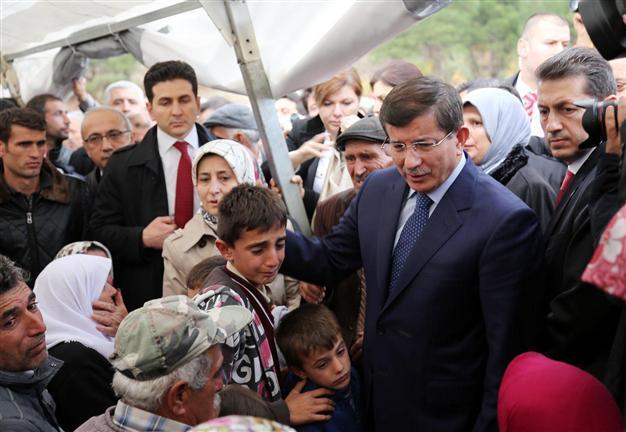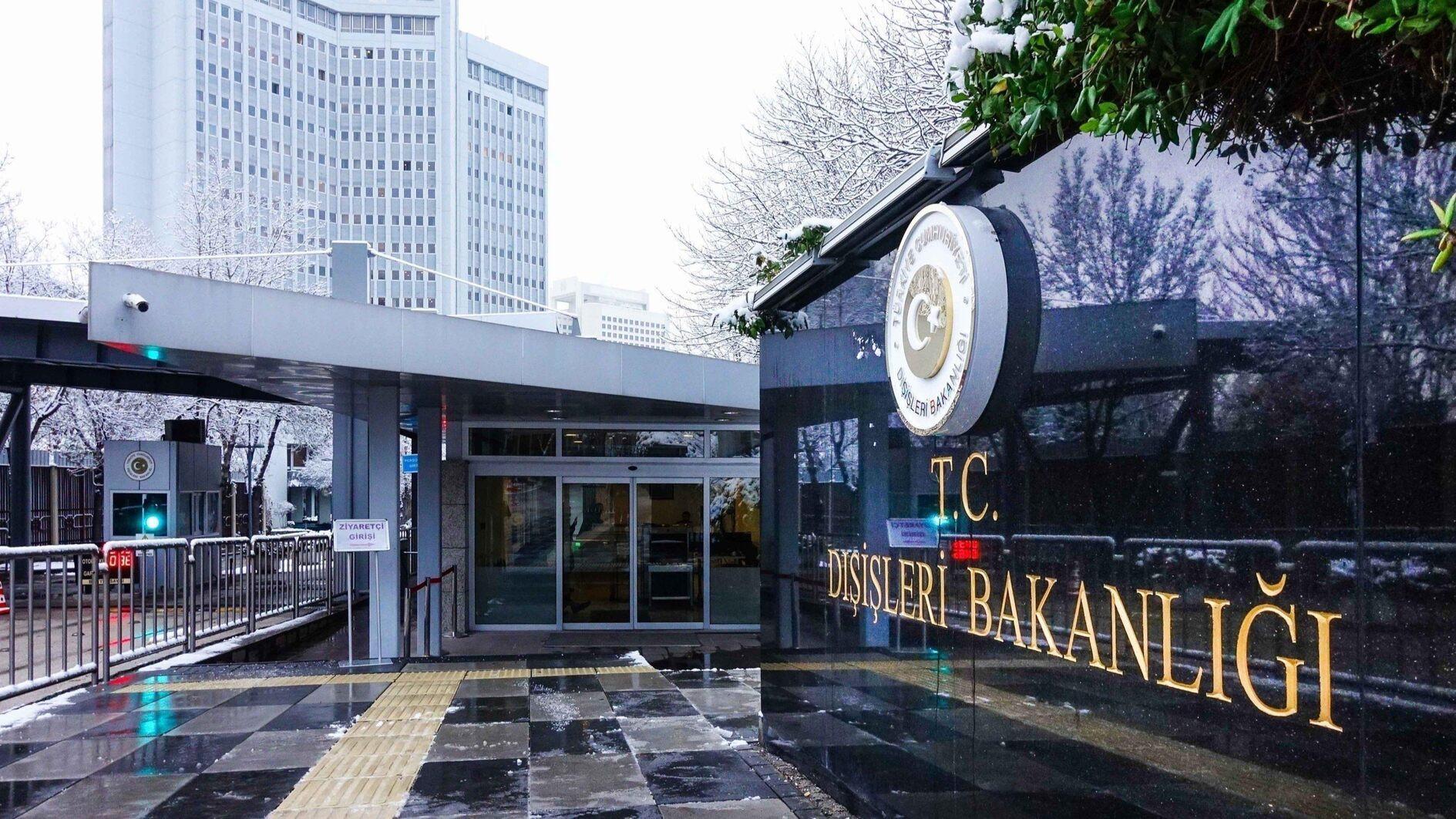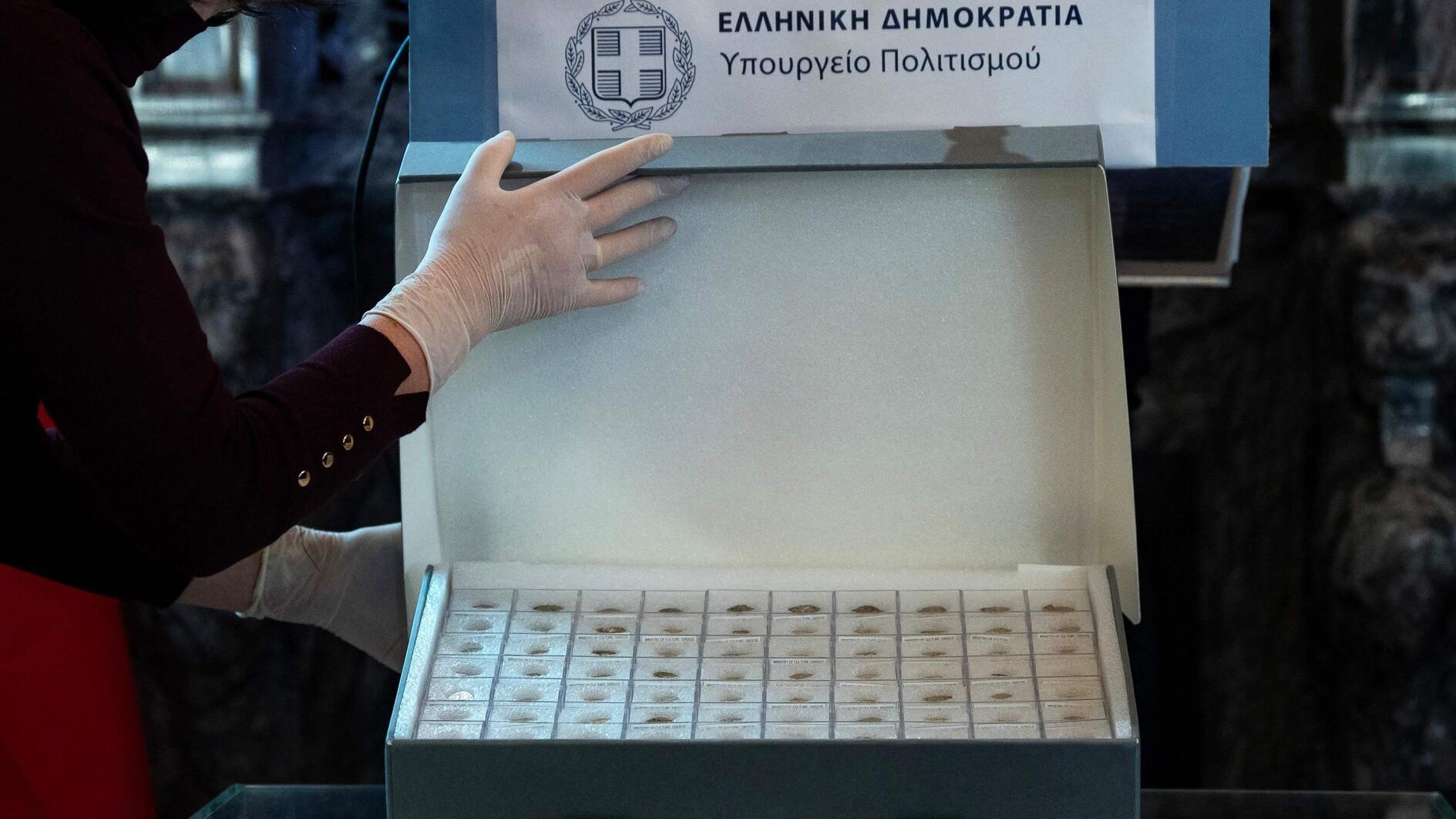New disaster sparks debate on mining security in Turkey
KARAMAN

Prime Minister Ahmet Davutoğlu visited Ermenek on Oct. 29. DHA Photo
A mining accident in the Central Anatolian province of Karaman that left 18 workers 375 meters below the ground on Oct. 28 has sparked a fresh debate on mining safety, less than six months after Turkey’s largest ever industrial disaster.Hopes were fading even as the water level started to decrease in the mine after a flood that caused the accident, with experts beginning to discuss the reasons for Turkey’s latest mining catastrophe.
Survivors told reporters that the galleries of the coal mine in Karaman’s Ermenek district were suddenly flooded after a “blast of water” while they were having lunch inside. Some of them also said they smelled gas.
The water levels quickly rose above the level where the miners were working. Only after 15 hours did the 11,000 tons of water start to recede thanks to additional pumps brought to the entrance of the mine.
Prime Minister Ahmet Davutoğlu said in Ermenek on Oct. 29 that the cause of the accident would be “comprehensively investigated,” but experts have suggested that the flood stemmed from poor production planning.
The Chamber of Mining Engineers (MMO), which is a part of the Turkish Union of Engineers’ and Architects’ Chambers (TMMOB), released a statement regarding the incident, concluding that the conditions in Ermenek that resulted in the disaster were similar to the deadliest-ever mining accident in Turkey, which occurred in Soma in May, claiming 301 lives.
As in Soma, three companies were mining separately in Ermenek without notifying each other of their production and planning, the MMO said. The lack of “basin mining” cooperation, it added, may have led any company to approach too closely to another one’s old mine full of water.
The statement also stressed that the responsibility for enforcing the necessary cooperation between private firms lies with the Energy Ministry’s General Directorate of Mining (MİGEM), which officially collects all information regarding mining facilities.
“MİGEM doesn’t take basin mining into consideration when issuing production licenses. It creates a fragmented process for planning and operation. Gas and flooding risks regarding companies working in the same field cannot be known and prevented because of this system,” the MMO statement added.
Mehmet Torun, the former chair of MMO, separately said that MİGEM had failed to mark an old mine in the area after it was closed down in the 2000s. “When the new mine expanded toward this old mine, where lots of water was accumulated over the years, the walls collapsed and the flood occurred,” Torun said.
Others allege that the mining company in Ermenek “failed to provide the ministry with the full map of its galleries to evade tax.”
İbrahim Atalay, a world-renowned geography professor who has studied the Karaman region, said the massive amount of water that quickly filled the galleries might have come from an underground river.
“If necessary studies were conducted before production, the disaster could have been averted,” Atalay told Hürriyet.
Rescue teams and ambulances were dispatched to the area soon after the incident.
“Over 40 workers were in the mine at the time of the incident, when there was a problem in one gallery. The other workers left the mine but 20 miners were left working in the flooded gallery,” Karaman Governor Murat Koca told Anadolu Agency.
Energy Minister Taner Yıldız, Labor Minister Faruk Çelik and Treansport Minister Lütfi Elvan arrived in Ermenek to observe the rescue operations at the mine. The main opposition Republican People’s Party (CHP) also sent representatives to the site, headed by the party’s general secretary, Gürsel Tekin.
“Only one pump is working to discharge the water, but it is not enough. A second pump has just been assembled,” Yıldız told reporters in front of the mine on the evening of Oct. 28. “The water level in the flooded mine is continuing to rise and it is increasing a meter every two hours."
Yıldız released another statement at 3 a.m. on Oct. 29, noting that the water level in the mine had started to decrease almost 15 hours after the incident. “Approximately, 11,000 cubic meters of water flooded the mine,” he said.
Çelik said eight errors were determined during June inspections at the mine. “None of them required a shut-down,” he said, stressing that the source of the water that flooded the mine had not yet been discovered. “The owner of the business is responsible here,” he added.
“This is the third flood at the mine,” a miner who survived told Anadolu Agency, also blaming the company. “That wouldn’t happen if the necessary precautions were taken.”
















